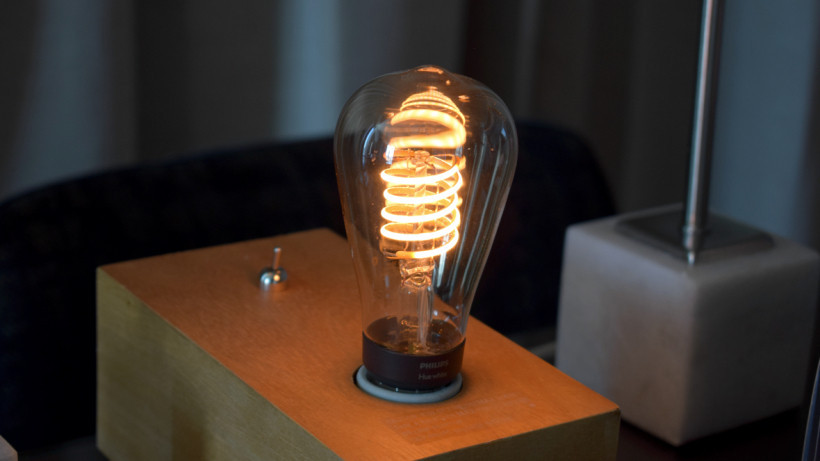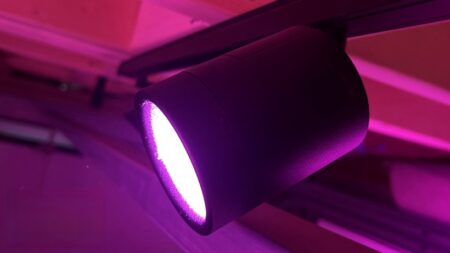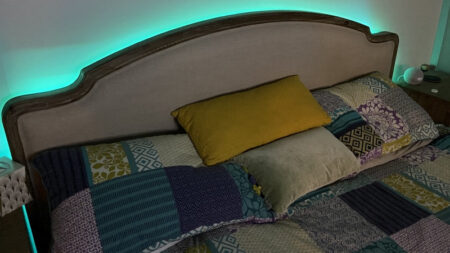Edison himself would be proud
The first Hue Filament bulbs work a treat. Functionally, they behave just like any other Hue bulbs, and with the optional Bluetooth they're more versatile. You are limited to just one color, however, and as with most Hue products, you'll pay more to own them.
Pros
- Great design
- Three sizes
- Bluetooth option
Cons
- Limited temperature
- Only white
- Expensive
The Philips Hue range is pretty vast, but one thing fans have long been calling for is a vintage-style, exposed Edison bulb. Finally, we’ve got one.
In fact, we’ve got three variations of the new Philips Hue Filament bulb, which hipsters will surely be pawning their fixie bikes for.
It joins the line up of the existing Philips Hue bulbs and the Philips Hue Bluetooth, which offers the chance to get the full Hue experience but without setting up the Hue Bridge.
The stylish smart bulbs launching in the US and UK just in time for you to cozy up your home with some warmer lighting and fend off the encroaching cold.
We’ve been putting the Hue Filament on test for the past couple of weeks. Here’s what we think of it, and how it compares to the rest of the Hue range.

Philips Hue Filament: Design and color
The first question we asked Signify (the company that owns Hue) was: why did it take so long to make an Edison smart bulb?
The answer is in what you don’t see. Most of the Hue technology is crammed into the base of the bulb and out of sight.
Everything had to be miniaturized enough to cram it down, and the only “tell” is the LED that’s visible when the bulb is off. But switch it on and the exposed coil ignites like the real deal, emitting the warm-orangey glow you’d expect to see.
The Filament comes in three shapes: a traditional A19/A60 that costs £17.99, a ST19/ST64 “tube” that’s more traditionally “Edison” in its look for £19.99, and a G25/G93 globe for £24.99.
All of them shine at the same brightness of 550 lumens with a locked temperature color of 2100K. For comparison, the standard Hue white and color bulbs put out 800 lumens and a temperature ranging 2200K-6500K.
As such, the vintage Hue bulbs are better deployed as accent lighting than replacements for your big lamps or ceiling lights. They’re still plenty bright when turned up max, but I wouldn’t light my kitchen with them.
You’ll also probably want to keep them exposed, as is the point of Edison bulbs.

Philips Hue Filament: Features and in use
In terms of connectivity and features, the Hue Filament bulbs behave just like any other of the more recent Hue bulbs.
More recent because that now includes Bluetooth connectivity, something Signify has updated its range with this year and says will be supported on all future bulbs.
It means you no longer need the Hue Bridge to get started, which lowers the price of entry and means you get some level of control out of the box.
However, while you’ll be able to control power and brightness from your phone, that control goes away the moment you leave the Bluetooth range.
For full control, you’ll want a Bridge, which connects to your Wi-Fi and talks to your bulbs over Zigbee.
It means you can control your lights remotely, add the Filament bulbs into routines in the Hue app, and make full use of wider integrations through things like HomeKit.

I’m on the HomeKit wagon right now, and enjoying some of the new light controls that come with the iOS 13 update. That applies less to the Filament bulbs, which I can only control the dimness of (no color or warmth, like my others).
Still, my new Filament lights popped up on HomeKit instantly, no problems there.
Responsiveness is good too. The Filament takes about half a second longer than color Hue bulb to switch off completely, but I expect this will matter to approximately no one.
And remember, as with almost all smart lights, Hue bulbs can be used just like a regular bulb without any connectivity at all.
Sort of defeats the point of paying extra for the features, but it’s good to have the option when the Wi-Fi goes down, right?






